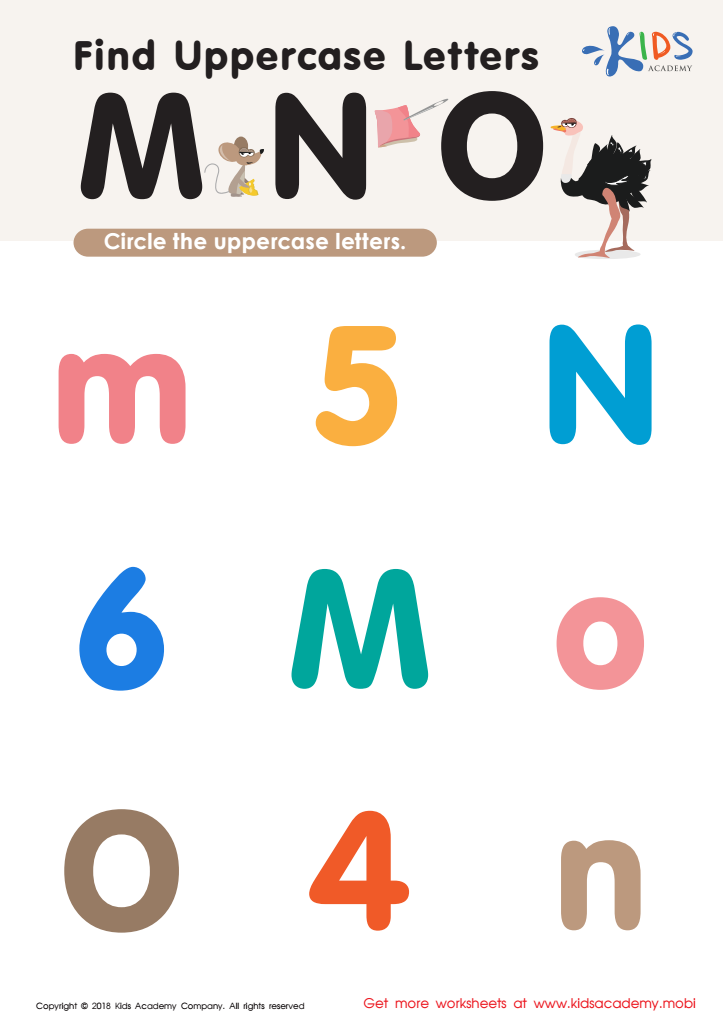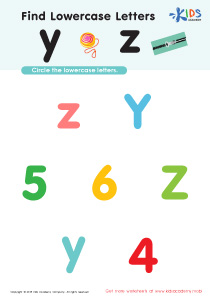Uppercase identification Normal Uppercase Letters Worksheets for Ages 4-8
5 filtered results
-
From - To
Introducing our "Uppercase Identification Normal Uppercase Letters Worksheets" designed for ages 4-8! These engaging activities help young learners recognize and identify uppercase letters, reinforcing essential early literacy skills. Featuring a variety of fun exercises, our worksheets support letter recognition, writing practice, and visual discrimination. Ideal for preschool and early elementary, these printable sheets make learning enjoyable and effective. Explore dynamic activities like matching, tracing, and coloring, perfect for classroom or at-home practice. Boost your child's letter confidence with Kid’s Academy’s expertly crafted resources today! Visit us online to download and begin your uppercase adventure!


Find Uppercase Letters Worksheet


Find Uppercase Letters J, K, and L Worksheet


Find Uppercase Letters A, B, and C Worksheet


Find Uppercase Letters V, W, X Worksheet


Find Uppercase Letters M, N, and O Worksheet
Parents and teachers should care about uppercase letter identification in children ages 4-8 because it is a cornerstone of early literacy development. Understanding and recognizing uppercase letters help children become familiar with the alphabet, which is foundational for reading and writing skills. Since uppercase letters are often easier to distinguish due to their uniform size and simpler shapes compared to lowercase letters, they serve as an accessible entry point for young learners.
Additionally, uppercase letters are frequently used for emphasis in texts, such as at the beginning of sentences and in proper nouns. Teaching children to identify these letters helps them understand and follow basic grammatical rules, aiding in clearer communication and comprehension. Early mastery of uppercase letters boosts children's confidence in their abilities, making them more eager to engage in reading activities.
Moreover, recognizing uppercase letters prepares children for everyday experiences, such as reading road signs, book titles, and understanding key visual information in their environment. By focusing on this skill during these formative years, parents and teachers provide children with a solid foundation, setting them up for future academic success and fostering a lifelong love of reading and learning.
 Assign to My Students
Assign to My Students
















